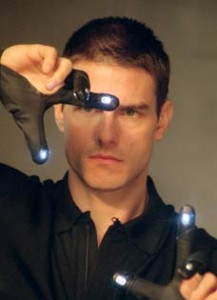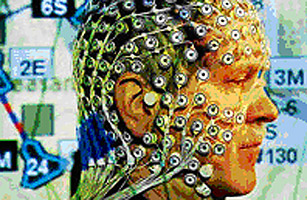Imagine a world of streets lined with video cameras that alert authorities to any suspicious activity. A world where police officers can read the minds of potential criminals and arrest them before they commit any crimes. A world in which a suspect who lies under questioning gets nabbed immediately because his brain has given him away.
Though that may sound a lot like the plot of the 2002 movie “Minority Report,” starring Tom Cruise and based on a Philip K. Dick novel, I’m not talking about science fiction here; it turns out we’re not so far away from that world. But does it sound like a very safe place, or a very scary one?

It’s a question I think we should be asking as the federal government invests millions of dollars in emerging technology aimed at detecting and decoding brain activity. And though government funding focuses on military uses for these new gizmos, they can and do end up in the hands of civilian law enforcement and in commercial applications. As spending continues and neurotechnology advances, that imagined world is no longer the stuff of science fiction or futuristic movies, and we postpone at our peril confronting the ethical and legal dilemmas it poses for a society that values not just personal safety but civil liberty as well.
Consider Cernium Corp.’s “Perceptrak” video surveillance and monitoring system, recently installed by Johns Hopkins University, among others. This technology grew out of a project funded by the Defense Advanced Research Projects Agency — the central research and development organization for the Department of Defense — to develop intelligent video analytics systems. Unlike simple video cameras monitored by security guards, Perceptrak integrates video cameras with an intelligent computer video. It uses algorithms to analyze streaming video and detect suspicious activities, such as people loitering in a secure area, a group converging or someone leaving a package unattended. Since installing Perceptrak, Johns Hopkins has reported a 25 percent reduction in crime.
But that’s only the beginning. Police may soon be able to monitor suspicious brain activity from a distance as well. New neurotechnology soon may be able to detect a person who is particularly nervous, in possession of guilty knowledge or, in the more distant future, to detect a person thinking, “Only one hour until the bomb explodes.” Today, the science of detecting and decoding brain activity is in its infancy. But various government agencies are funding the development of technology to detect brain activity remotely and are hoping to eventually decode what someone is thinking. Scientists, however, wildly disagree about the accuracy of brain imaging technology, what brain activity may mean and especially whether brain activity can be detected from afar.
Yet as the experts argue about the scientific limitations of remote brain detection, this chilling science fiction may already be a reality. In 2002, the Electronic Privacy Information Center reported that NASA was developing brain monitoring devices for airports and was seeking to use noninvasive sensors in passenger gates to collect the electronic signals emitted by passengers’ brains. Scientists scoffed at the reports, arguing that to do what NASA was proposing required that an electroencephalogram (EEG) be physically attached to the scalp.
Read moreThe Government Is Trying to Wrap Its Mind Around Yours





